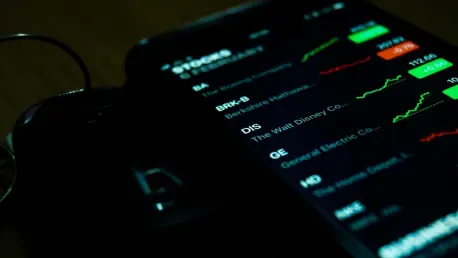The article explores two major topics within the derivatives market: the potential shift to a 24/7 trading system and the rise of perpetual futures contracts. These elements reflect the evolving landscape of financial markets driven by technology and innovation.
Introduction to Emerging Topics
The Commodity Futures Trading Commission (CFTC) has issued two Requests for Comment (RFCs) to better understand the implications of these innovations. The purpose of these RFCs is to gather insights from market participants and stakeholders.
The Need for Continuous Trading
Trading on a 24/7 basis is gaining interest due to advancements in technology and increased demand for broader market access. This shift could revolutionize trading by making markets more accessible across different time zones.
Technological Advancements and Market Demand
The rise of digital trading platforms has made continuous trading feasible. Market participants from various regions seek more flexible trading hours to match their local business environments. Continuous trading allows traders to respond to market events in real-time, regardless of their geographical location. This 24/7 model reflects the increasing globalization of financial markets, where significant events can occur at any time, affecting market conditions worldwide.
Furthermore, the integration of advanced technologies such as artificial intelligence and machine learning enhances the efficiency and reliability of digital trading platforms. These innovations facilitate automated trading and real-time data analysis, features that are crucial for managing the complexities of round-the-clock market operations. As technology continues to evolve, the adoption of continuous trading systems becomes increasingly viable and attractive to a diverse range of market participants.
Enhancing Market Accessibility
A 24/7 trading structure could significantly enhance market access for global participants. This structure would cater to a diverse range of traders, providing opportunities for more consistent trading and potentially increasing liquidity. Enhanced accessibility ensures that markets are more inclusive, accommodating traders from various regions who may have been previously restricted by traditional trading hours.
Additionally, this model supports the dynamic nature of modern trading, where market participants require the flexibility to execute trades at any time.
Moreover, continuous trading can reduce market volatility by allowing a more balanced flow of trading activities throughout the day and night. By distributing trading activities across different time zones, markets can avoid the sudden spikes in activity that occur when trading is confined to specific hours. This benefit is crucial for maintaining market stability and ensuring fair pricing.
Overall, the transition to a 24/7 trading system promises to democratize market access, foster a more inclusive trading environment, and enhance overall market efficiency.
Operational and Regulatory Challenges
Implementing continuous trading raises several important operational and regulatory questions. Ensuring system reliability, market integrity, and compliance with core principles are among the primary concerns.
System Reliability and Maintenance
One of the significant challenges in 24/7 trading is maintaining system reliability without the ability to schedule regular maintenance downtimes. This requires robust technology and contingency planning. Trading platforms must be equipped with advanced system safeguards to prevent and swiftly address technical outages. Continuous operational demands necessitate enhanced system redundancy and failover mechanisms to ensure uninterrupted services.
Moreover, patch management becomes increasingly complex as updates and maintenance tasks must be seamlessly integrated without disrupting trading activities. The implementation of real-time monitoring systems is indispensable, providing immediate detection and resolution of any technical issues that arise. Contingency planning should also include detailed strategies for handling crisis situations, ensuring that market operations can continue smoothly even under adverse conditions.
Comprehensive Market Surveillance
Around-the-clock operations necessitate continuous market surveillance. Effective monitoring systems must be in place to detect and mitigate any unusual activities or manipulative behaviors. Continuous surveillance is crucial for maintaining market integrity and protecting investors from fraudulent activities. High-frequency trading and other automated trading strategies require robust surveillance tools capable of analyzing large volumes of data in real-time.
Additionally, compliance with anti-money laundering (AML) and counter-terrorism financing regulations must be ensured, demanding vigilant and continuous oversight. Surveillance systems should be backed by advanced analytics, capable of identifying and flagging suspicious patterns and behaviors. Regular audits and updates to surveillance protocols are necessary to adapt to the evolving trading landscape and emerging threats. Finally, collaboration with other regulatory bodies and sharing surveillance data can enhance the effectiveness of market monitoring, ensuring a safer trading environment.
Governance and Staffing Models
Adapting to a 24/7 trading framework requires significant changes in governance and staffing models. Organizations need to maintain operational staff, compliance officers, and risk management teams at all hours.
Ensuring the availability of skilled personnel around the clock involves implementing shift rotations and leveraging remote working arrangements. Effective governance demands clear protocols and communication channels to handle emergencies and maintain operational continuity.
Moreover, staff training programs must be designed to keep employees updated on the latest regulatory changes, technological advancements, and best practices in risk management. The transition to a continuous trading model also requires a cultural shift within organizations, fostering a mindset of adaptability and continuous improvement. This evolution is not merely about extending trading hours; it entails a comprehensive transformation in how organizations manage their operations, governance, and human resources to align with the demands of a 24/7 market environment.
Regulatory Compliance
Ensuring regulatory compliance in a 24/7 trading system is a critical challenge that requires careful consideration and adaptation of existing frameworks. The continuous nature of trading operations necessitates a reevaluation of compliance mechanisms to ensure they are robust and capable of handling the demands of round-the-clock activity. This includes adhering to core principles related to system safeguards, market integrity, and business continuity.
Regulatory bodies must also consider the global nature of 24/7 trading, which involves accommodating different regulatory jurisdictions and compliance requirements. Harmonizing these regulations to create a cohesive framework that supports continuous trading is essential. Additionally, organizations must invest in advanced compliance technologies, such as automated monitoring and reporting systems, to ensure real-time adherence to regulatory standards. These systems should be designed to handle large volumes of data efficiently and provide timely reports on compliance status. Regular reviews and updates to compliance protocols are necessary to address evolving market dynamics and regulatory changes.
Moreover, fostering a culture of compliance within organizations is crucial. Staff should be well-trained and aware of their responsibilities, and there should be clear channels for reporting and addressing compliance issues. Establishing a strong compliance culture not only helps in meeting regulatory requirements but also enhances the overall integrity and reputation of the trading environment.
Understanding Perpetual Futures Contracts
Perpetual futures contracts are an emerging type of derivative, especially in digital asset markets. These contracts offer flexibility by not having an expiration date and allowing traders to hold positions indefinitely.
The Growth of Digital Assets
The popularity of cryptocurrencies and digital assets has fueled the growth of perpetual futures contracts. These instruments cater to the trading behavior and risk appetite of digital asset traders. Cryptocurrencies, with their decentralized and volatile nature, present unique opportunities for traders seeking to capitalize on price movements. Perpetual futures contracts align well with this market, providing a tool for continuous engagement without the constraints of traditional futures contracts.
The rise of cryptocurrency exchanges offering perpetual contracts has further accelerated their adoption. These platforms provide user-friendly interfaces, leverage options, and high liquidity, attracting a diverse range of participants from retail traders to institutional investors. As digital assets become more integrated into the financial ecosystem, the demand for innovative derivatives like perpetual futures continues to grow.
Unique Characteristics of Perpetual Contracts
Perpetual contracts are distinct because they do not have a fixed expiration date. This feature allows traders to maintain leveraged positions without the pressure of contract maturity. Unlike traditional futures contracts, which settle at predetermined intervals, perpetual contracts remain open, providing continuous exposure to market movements. This ongoing nature requires traders to manage their positions actively, employing strategies to leverage market trends and mitigate risks.
The funding rate mechanism is a critical aspect of perpetual contracts, ensuring that their prices align with the underlying asset. This periodic payment between long and short positions incentivizes balance in supply and demand. Traders must navigate these funding rates while managing their positions, adding a layer of complexity to their strategies.
Additionally, perpetual contracts offer increased flexibility and liquidity compared to traditional futures. Traders can enter and exit positions more easily, adapting to market conditions without the constraints of contract expiration. This flexibility makes perpetual contracts attractive for both short-term speculation and long-term exposure.
Risk Management and Market Dynamics
The introduction of perpetual futures requires careful risk management and an understanding of their impact on market dynamics. Regulators must evaluate how these instruments influence market integrity and existing structures.
Understanding the Risks
Perpetual futures contracts introduce unique risks that must be managed effectively. These include the potential for high leverage, which can amplify both gains and losses, and the volatility inherent in digital asset markets. The absence of an expiration date means that traders can hold positions indefinitely, increasing the complexity of risk management.
Effective risk management strategies involve leveraging advanced analytics and real-time monitoring to detect and respond to market changes swiftly. Traders must be vigilant in managing their margin levels to avoid liquidation and ensure they are prepared for rapid market fluctuations. Additionally, the role of funding rates in perpetual contracts introduces another layer of risk, as unexpected changes in these rates can impact the profitability of positions.
Market Impact
The introduction of perpetual futures can significantly influence market dynamics. These instruments provide continuous price discovery and liquidity, contributing to more efficient markets. However, their impact on market integrity and stability must be carefully considered. Perpetual futures can lead to increased volatility, particularly in already volatile digital asset markets. This necessitates robust surveillance and regulatory frameworks to monitor and address potential manipulative activities.
Regulators must balance the benefits of perpetual contracts with the need to maintain market integrity. Ensuring that these instruments do not disrupt existing market structures or create systemic risks is paramount. This requires ongoing collaboration between regulators, market participants, and technological innovators to develop and enforce appropriate safeguards.
Regulatory Framework Adjustments
To accommodate the unique risks and features of perpetual futures, regulators may need to adjust current frameworks. This involves ensuring that definitions, risk measures, and surveillance mechanisms are effective.
Defining and Managing Risks
Developing clear definitions and guidelines for perpetual futures is essential. Proper risk management practices must be implemented to address the specific challenges posed by these contracts. Regulators should define the characteristics of perpetual contracts, including funding rates, leverage limits, and margin requirements. These definitions provide clarity for market participants and help ensure consistent application of rules.
Risk measures must be tailored to the unique nature of perpetual contracts. This includes enhanced margin requirements to account for the continuous nature of these instruments and the potential for significant price movements. Surveillance mechanisms must be capable of monitoring perpetual contracts in real-time, identifying unusual trading patterns, and mitigating potential risks. Regular stress testing and scenario analysis can help regulators and market participants prepare for adverse events and ensure the stability of the trading environment.
Ensuring Market Integrity
Regulatory frameworks should ensure that perpetual futures do not disrupt market integrity. Robust mechanisms must be in place to prevent market manipulation and protect participants.
Effective market surveillance is crucial for detecting and addressing manipulative behaviors. Regulators should employ advanced technologies, including machine learning and big data analytics, to enhance their monitoring capabilities. These technologies can identify anomalies and patterns indicative of manipulation, enabling swift and decisive action.
Additionally, collaboration with international regulatory bodies can help harmonize standards and improve the oversight of global trading activities. Coordinated efforts are essential for addressing the cross-border nature of digital asset markets and ensuring consistent regulatory enforcement.
Educating market participants about the risks and responsibilities associated with perpetual futures is also vital. Providing clear guidelines and resources can help traders make informed decisions and adhere to best practices.
Conclusion by Analysis
The CFTC’s proactive stance in gathering feedback highlights the importance of adapting regulatory measures to the evolving financial landscape. These discussions will shape the future stability and integrity of derivatives markets.
Detailed Analysis of 24/7 Trading
The potential shift to a 24/7 trading system represents a significant innovation driven by market demands and technological advancements. While this concept promises enhanced market accessibility and innovation, it also introduces numerous operational, regulatory, and risk management challenges.
Benefits and Challenges
Continuous trading offers substantial benefits, including increased market access and the ability to respond to global events in real-time. This model supports the dynamic nature of modern trading and aligns with the globalized financial landscape.
However, the challenges associated with 24/7 trading are significant. Maintaining system reliability without scheduled downtimes, ensuring comprehensive market surveillance, and adapting governance models are critical concerns. Organizations must invest in robust technologies and contingency planning to manage these challenges effectively. Additionally, regulatory frameworks must evolve to support continuous operations while ensuring market integrity and compliance with core principles.
Detailed Analysis of Perpetual Futures Contracts
Perpetual futures contracts, particularly in the digital asset space, allow traders to hold leveraged positions indefinitely. The emergence of these instruments necessitates a deep dive into their unique characteristics and the associated risks.
Understanding and Managing Risks
Perpetual futures introduce unique risks, including high leverage and market volatility. Effective risk management strategies are essential for navigating these challenges. Regulators must develop clear definitions and guidelines for perpetual contracts, ensuring consistent application of rules and addressing the specific risks posed by these instruments.
Additionally, surveillance mechanisms must be enhanced to monitor perpetual contracts in real-time, identify unusual trading patterns, and mitigate potential risks. Collaboration with international regulatory bodies and the use of advanced technologies can improve oversight and ensure consistent enforcement.
Final Analysis and Recommendations
The article delves into two prominent topics within the derivatives market: the potential shift to a 24/7 trading system and the increasing popularity of perpetual futures contracts. These developments signify the ongoing changes in financial markets, driven by advancements in technology and innovation.
A 24/7 trading system would drastically alter the way global markets operate, providing more flexibility and accessibility to traders around the world. This move is particularly appealing in a world that is becoming more interconnected and where financial events happen around the clock. By allowing trades to occur at any time, markets could become more efficient and responsive to global news, reducing the time lag that currently affects trading decisions.
Perpetual futures contracts, another significant trend, are gaining traction due to their unique features. Unlike traditional futures contracts, which have a set expiration date, perpetual futures do not expire. This allows traders to hold positions indefinitely without worrying about contract rollovers. These contracts have become especially popular in cryptocurrency markets, where volatility and round-the-clock trading are the norms.
In summary, the potential shift to 24/7 trading and the rise of perpetual futures contracts highlight the evolving nature of financial markets. These changes aim to create a more dynamic, responsive, and inclusive trading environment, reflecting the fast-paced, technological progress of today’s financial landscape.









